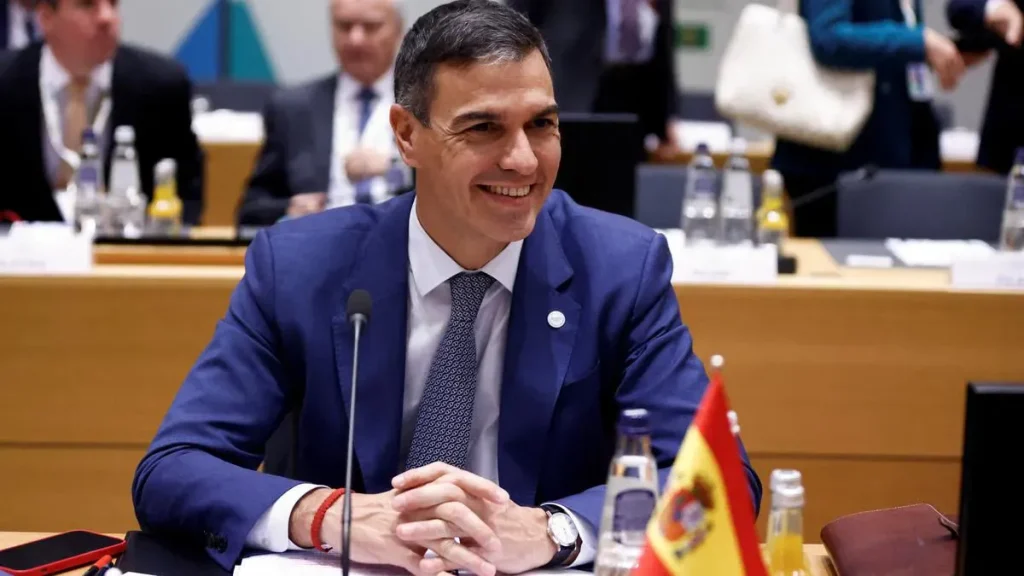Context:
Recently, at the invitation of the Indian Prime Minister, the President of Spain Mr Pedro Sanchez visited India.
Key Highlights of the India-Spain Joint Statement
- Defense Partnership: Prime Minister Modi and President Sanchez jointly inaugurated the C-295 aircraft assembly line in Vadodara, Gujarat, advancing India’s “Make in India” initiative.
- Economic Cooperation: Both leaders are committed to strengthening economic ties via various initiatives such as the “Fast Track Mechanism” and the “India-Spain CEOs Forum.”
- India-Spain Year of Culture, Tourism, and AI (2026): The year 2026 was designated as a special period to promote cultural exchange, tourism, and cooperation in artificial intelligence between the two nations.
- Consular Expansion: Plans were announced for a Spanish Consulate in Bengaluru, alongside the operationalization of an Indian Consulate in Barcelona.
- Global and Regional Cooperation: Both leaders underscored the importance of multilateralism, mutual support for their UNSC candidacies, and collaboration on climate action and renewable energy initiatives.
- Commitment to EU-India Relations: India and Spain expressed their strong support for the India-EU Free Trade Agreement and the India-Middle East-Europe Economic Corridor (IMEEC) Project.
About India-Spain Bilateral Relations
History:
- Maritime Links: India and Spain have historical maritime links dating back to the 16th century.
- Colonial Era: Spain established a colonial presence in parts of India, particularly in the Malabar region.
- Establishment of Diplomatic Ties: In 1956, diplomatic ties between India and Spain were established, with Spain opening its embassy in New Delhi, marking the beginning of formal interactions.
- High-Level Visits: Over the years, numerous high-level visits have taken place, including Indian Prime Minister Narendra Modi’s visit to Spain in 2017, which was a significant step towards enhancing bilateral cooperation.
- Continued Engagement: Regular meetings at international forums such as the G20 have further solidified their diplomatic relationship, reflecting a commitment to addressing global challenges collaboratively.
Bilateral Trade and Investment:
- Trade Volume: In 2023, bilateral trade reached approximately US$ 8.25 billion, with India’s exports to Spain totalling US$ 6.33 billion and imports amounting to US$ 1.92 billion, showcasing a robust trading relationship.
- Key Exports and Imports: Major Indian exports include mineral fuels, chemicals, iron and steel, electrical machinery, and textiles. Conversely, India imports industrial machinery and mechanical appliances from Spain.
- Foreign Direct Investment (FDI): Spain ranks as India’s 16th largest investor, with a cumulative FDI stock of about US$ 4.2 billion, primarily in sectors like renewable energy and infrastructure.
- Business Forums: The establishment of platforms such as the India-Spain CEOs Forum has facilitated dialogue between business leaders from both countries to explore investment opportunities and enhance trade relations.
Areas of Cooperation
- Defence Technology: Spanish companies are involved in significant defence projects in India, including technology transfer for military aircraft and submarines.
Renewable Energy Initiatives:
- Spain’s expertise in renewable energy, especially in wind and solar power, has aligned well with India’s renewable energy goals.
- Companies such as Gamesa and Acciona have invested in India’s wind and solar energy projects.
- Spain became the 99th member of the International Solar Alliance. Spain handed over the International Solar Alliance Instrument of Ratification.
Cultural Diplomacy: Both nations actively promote cultural exchanges through festivals, art exhibitions, and academic collaborations aimed at fostering people-to-people connections.
Tourism Development: Recognizing tourism’s potential for economic growth, both countries are working together to promote tourism through joint marketing initiatives and expert panels focused on enhancing travel exchanges.
Indian Diaspora:
- The Indian community in Spain is relatively small but has been growing in recent years.
- As of 2023, approximately 55,000 Indians reside in Spain, contributing actively to sectors such as hospitality, retail, IT, and healthcare.
Challenges
- Economic Disparities: Despite growing trade relations, economic disparities between the two nations can pose challenges in fully realizing the potential of their bilateral relationship.
- Geographical Distance: The geographical distance between the two countries can pose challenges to frequent high-level visits and business interactions.
- Complex Trade Regulations: Navigating complex trade regulations and bureaucratic procedures can be challenging for businesses.
- Global Economic Uncertainties: Global economic uncertainties can impact bilateral trade and investment flows.
Way Forward
- Strengthening Economic Ties: Fostering deeper economic ties through enhanced trade agreements and investment frameworks will be crucial for both nations moving forward.
- Collaborate on Climate Action and SDGs: Jointly pursue sustainable development projects under the International Drought Resilience Alliance and Indo-Pacific Oceans Initiative to address environmental challenges.
- Collaborative Research Initiatives: Joint research projects in technology and innovation can help both countries leverage their strengths for mutual benefit while addressing global challenges like climate change.
- Focus on People-to-People Connections: Promoting educational exchanges and tourism will strengthen societal ties between Indians and Spaniards, fostering a deeper understanding of each other’s cultures

